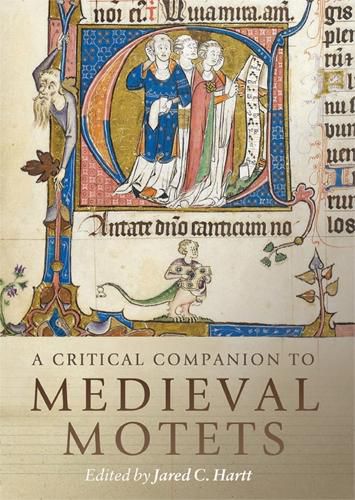Readings Newsletter
Become a Readings Member to make your shopping experience even easier.
Sign in or sign up for free!
You’re not far away from qualifying for FREE standard shipping within Australia
You’ve qualified for FREE standard shipping within Australia
The cart is loading…






Motets constitute the most important polyphonic genre of the thirteenth and fourteenth centuries. Moreover, these compositions are intrinsically involved in the early development of polyphony. This volume - the first to be devotedexclusively to medieval motets - aims to provide a comprehensive guide to them, from a number of different disciplines and perspectives. It addresses crucial matters such as how the motet developed; the rich interplay of musical,poetic, and intertextual modes of meaning specific to the genre; and the changing social and historical circumstances surrounding motets in medieval France, England, and Italy. It also seeks to question many traditional assumptions and received opinions in the area.
The first part of the book considers core concepts in motet scholarship: issues of genre, relationships between the motet and other musico-poetic forms, tenor organization, isorhythm, notational development, social functions, and manuscript layout. This is followed by a series of individual case studies which look in detail at a variety of specific pieces, compositional techniques, collections, and subgenres.
$9.00 standard shipping within Australia
FREE standard shipping within Australia for orders over $100.00
Express & International shipping calculated at checkout
Motets constitute the most important polyphonic genre of the thirteenth and fourteenth centuries. Moreover, these compositions are intrinsically involved in the early development of polyphony. This volume - the first to be devotedexclusively to medieval motets - aims to provide a comprehensive guide to them, from a number of different disciplines and perspectives. It addresses crucial matters such as how the motet developed; the rich interplay of musical,poetic, and intertextual modes of meaning specific to the genre; and the changing social and historical circumstances surrounding motets in medieval France, England, and Italy. It also seeks to question many traditional assumptions and received opinions in the area.
The first part of the book considers core concepts in motet scholarship: issues of genre, relationships between the motet and other musico-poetic forms, tenor organization, isorhythm, notational development, social functions, and manuscript layout. This is followed by a series of individual case studies which look in detail at a variety of specific pieces, compositional techniques, collections, and subgenres.